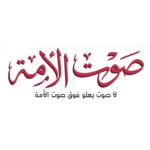|
Getting your Trinity Audio player ready...
|
The Special Tribunal for Lebanon Final Verdict | The End or A Beginning?
On March 1, 2009, a select body called the STL – the Special Tribunal for Lebanon was established. Its mission was to investigate the assassination of former Lebanese Prime Minister Rafik al-Hariri, who – along with twenty-two other people – was killed on February 14, 2005. The STL, headquartered near The Hague with an office in Beirut, was established by the UN and Lebanon’s government.
On August 18, 2020, the STL issued its verdict. The STL found a Lebanese citizen named Salim Jamil Ayyash guilty of the assassination. The STL identified Ayyash as a senior member of the Lebanese Hezbollah. Three other Lebanese suspects – also determined by the STL as Hezbollah members or supporters- were acquitted due to lack of conclusive evidence. The case of another Lebanese suspected of being involved in the assassination – Mustafa Badr al-Din (in the STL document his name spelled “Badreddine”) – who was the commander of Hezbollah’s forces in Syria was not concluded. This is because he was killed in Syria in May 2016. Accumulative information alleges Hezbollah leader Hassan Nasrallah and Iranian Al-Quds Force commander General Qassem Soleimani (killed by the US on January 3, 2020) ordered Bader al-Din’s bodyguards to assassinate him.
In this article, I will briefly review the background for establishing the STL, outline its major findings, and share what I believe will be the short-term consequences of the Tribunal’s decision on Lebanon.
The Establishment of the Tribunal and its Activities
On Monday, February 14, 2005, a massive explosion rocked Beirut. A truck loaded with explosives blew up next to the convoy of Rafik al-Hariri. Mr. Hariri had served two terms as Prime Minister of Lebanon. From 1992-1998 and 2000-2004. The blast killed twenty-two people – including Al-Hariri, and injured hundreds.
Since Lebanon’s independence in 1943, Syria never accepted Lebanon’s status as an independent country. During the Lebanese Civil War (1975 – 1990), the Syrian military entered Lebanon and, with brute force, increasingly gained political power. As Prime Minister, Rafik al-Hariri tried to expel the Syrian army from Lebanon.
But Rafik al-Hariri was not only trying to free Lebanon from Syrian control.
In 1982 Iran created Hezbollah in Lebanon. Hezbollah became Iran’s most valuable and powerful proxy. Hezbollah used weapons (supplied by Iran) and violence to increase Iran’s control in and over Lebanon. As Prime Minister, Rafik al-Hariri led the Lebanon political camp that tried to decrease Iran and Hezbollah’s influence on Lebanon. He demanded militias in Lebanon – including Hezbollah – abide by the United Nations Security Council Resolution 1559. The September 2004 UNSCR 1559 called for strengthening the Lebanese government, the withdrawal of foreign forces, and militias’ disarmament.
As Prime Minister, Rafik al-Hariri worked to strengthen Lebanon’s country as an independent entity and free it from the grip of foreign powers who were interested in controlling Lebanon for their own gain.
Al-Hariri’s assassination sparked massive public protests in Lebanon. As a result of the widespread public unrest, the Syrian-backed Lebanese government resigned. And in April 2005, the Syrian military withdrew from Lebanon.
Following Al-Hariri’s murder, the United Nations Security Council created a special team and launched an investigation. Based on their findings, on May 30, 2007, the UNSC adopted Resolution 1757. UNSCR 1757 authorized the formation of an international tribunal to investigate the assassination. The body was called the Special Tribunal for Lebanon (STL). Its mandate was to investigate people only. It did not have the authority to bring organizations or governments to trial. The Tribunal was empowered to act under Chapter 7 of the UN Charter. Chapter 7 allows the use of force and the application of sanctions against countries that do not cooperate with the STL’s orders and demands.
The STL’s investigation resulted in the identification of five Lebanese suspects. All of whom were linked to Hezbollah. Under its mandate, the Tribunal appealed to the Lebanese government to bring the suspects to the Tribunal for questioning. Repeatedly, the Lebanese government said it did not know as of the suspects’ whereabouts. Hassan Nasrallah, the leader of Hezbollah, said the STL was an Israeli – American conspiracy. He, therefore, announced that he did not recognize the Tribunal’s authority. Referring to the request to detain the suspects for interrogation, Nasrallah said, “the suspects will not be arrested within 30 days, nor 60 days, nor within 300 years.“
Captain Wissam Eid of the Lebanese Security Forces, who specialized in technology, provided the STL with a detailed picture of a sophisticated telephone system used by the assassins. The center of the network was located in Hezbollah’s stronghold in the southern district of Beirut. On January 25, 2008, Captain Eid – like Al-Hariri – was assassinated when a bomb obliterated his armored vehicle as it traveled through Beirut’s streets. His bodyguard and three civilians were also killed in the blast.
The head of the Intelligence branch of the Lebanese Internal Security Forces, Brigadier General Wissam al-Hassan, also provided essential and extensive evidence. The information he provided included the type of explosives used in the attack and recordings of the four suspects’ telephone conversations from the attack scene. He was also eliminated in a car bomb blast in Beirut in 2012.
STL Verdict
The STL’s verdict fills more than 2600 pages and covers many aspects of the plot. The report includes the background and the lead up to the crime, a detailed rendering of the assassination scene, and the specific explosives used in the murder. When it comes to the suspects – among other details – it traces their movements leading up to February 14, 2005. The report provides the location of the suspects at the time of the assassination. It outlines the mobile telephone network they created to support their activity and carry out the murder. It is a fascinating and impressive legal and investigative document that is worth reading.
As I said in the opening, I want to focus on the report’s main points. Below are quotes that are taken from the official verdict document published by the STL.
The Identity of the Suspects
762. The Trial Chamber can safely conclude that Mr. Badreddine, Mr. Ayyash, Mr. Oneissi, and Mr. Sabra were Hezbollah supporters. It has insufficient evidence to make this finding in Mr. Merhi’s case. Still, it notes that a member of his immediate family certainly fell into that category. Mr. Badreddine was undoubtedly a valued senior Hezbollah military commander.
Direct Involvement of the Hezbollah Leader (Hassan Nasrallah) and the Assad regime in Assassination
765. The Trial Chamber received no positive evidence that either any specific Hezbollah member or its leadership, and in particular, Mr. Nasrallah, had any motive to kill Mr. Hariri.
769. The Accused’s actions alone demonstrated their participation in the conspiracy and their criminal responsibility. However, the Trial Chamber does not need to find that the Accused were acting on behalf of or at the behest of any organization for a conviction. Links between the Accused and Hezbollah demonstrate the Accused’s common interests and explain the political context in which the attack occurred.
787. The Trial Chamber is satisfied from the evidence that: Syria and Hezbollah may have had motives to eliminate Mr. Hariri and some of his political allies.
Conviction
6807. Accordingly, the Trial Chamber also finds that Mr. Ayyash’s actions directly contributed to the execution of the crime of intentional homicide of Mr. Rafik Hariri through his central and leading role in the execution of the attack.
6831. The Trial Chamber, therefore, finds Mr. Ayyash guilty, as a co-perpetrator, of the intentional homicide of 21 persons, in addition to Mr. Rafik Hariri
6839. Accordingly, the Trial Chamber finds Mr. Ayyash guilty, as a co-perpetrator, of the attempted intentional homicide of the 226 people.
6841. For all the reasons outlined above, the Trial Chamber is satisfied beyond reasonable doubt that the Prosecution has proved the guilt of Salim Jamil Ayyash on all counts charged in the amended consolidated indictment.
6903. In these circumstances, the Trial Chamber’s decision to acquit Mr. Merhi, Mr. Oneissi, and Mr. Sabra.
The Killers Attempt to Mislead the World: The Case of Ahmad Abu Adass
On the afternoon of Monday, February 14, 2005, some hours after the assassination, international media outlets reported that a man named Ahmad Abu Adass claimed responsibility for the attack on behalf of an unknown fundamentalist group called El- Nusra-wal-Jihadi fi-Bilad-El-Sham. Ahmad Abu Adass was a Palestinian born in Saudi Arabia in 1982. He came to Lebanon at the age of nine.
As part of the plot, Addas’ was used as a scapegoat by the killers.
I would like to expand on this case because there are – and there will be – those who, out of an overt or hidden agenda, will echo this story. Here is one example. In August 2019, the Lebanese daily newspaper, Al-Akhbar, published an article entitled “Why is the Tribunal hiding information about Ahmad Abu Adass?“ From the title of the article, the theme is clear. In the report, the writer, Omar Nashabe, accused the STL of preventing – even perhaps sabotaging – a thorough investigation of the case against Abu Adass. Nashabe clearly tries to discredit the STL’s professionalism and objectivity. One should ask why does Nashabe percolate this narrative? One possible answer might have to do with the fact that he was a consultant to the team defending one of the suspects before the STL. When considering his piece, one might also think about who might be interested in echoing Nashabe’s claim. From that perspective, it is vital to consider that Nashabe’s article was published in Al-Akhbar – a pro-Hezbollah Lebanese news platform.
The STL investigation revealed the truth. Abu Adass’s claim of responsibility was fake.
Here are the STL’s significant findings on the matter of Abu Addas
5769. (Finally)The Trial Chamber agrees with the Prosecution and the Sabra Defense that Mr. Abu Adass was an ideal scapegoat.
5770. After carefully considering all the circumstances outlined above, the Trial Chamber is of the view that it can be satisfied beyond reasonable doubt that the claim of responsibility for the attack, as shown in the video, letter, and telephone calls to Reuters and Al-Jazeera, was a false claim. The most likely explanation is that those responsible for Mr. Hariri’s assassination attempted to turn attention away from themselves by diverting it to someone claiming a hatred of Mr. Hariri based upon his connections with Saudi Arabia, ostensibly to avenge the deaths of those who Saudi security forces had killed.
5772. The Trial Chamber also cannot make any explicit finding about Mr. Abu Adass’s fate; he is most likely deceased, and most probably, it would appear, from soon after his disappearance. There is no evidence on the record from which the Trial Chamber can make a definite finding about what happened to him, or when.
5773. The Trial Chamber finds that Mr. Abu Adass was not the suicide bomber, and his disappearance is consistent with him being used to set up a false claim of responsibility for the attack by those who perpetrated it. The evidence also suggests that the group El-Nusra-wal-Jihadfi-Bilad-El-Sham was fictitious, meaning that both aspects of the false claim were indeed false.
The STL’s final verdict clearly proves that Addas was innocent and that Nashabe’s argument is baseless. Through a thorough, in-depth investigation, the STL proved beyond a doubt that Ahmad Abu Adass did not perpetrate the attack and that he did not assassinate Al-Hariri. The real killers likely murdered Abu Adass.
Reactions in Lebanon to the STL Ruling
Leading Lebanese politicians, including the Christian President of Lebanon, Michel Aoun, and Nabih Berri, Speaker of the Lebanese Parliament and the head of the Lebanese Shi’ite Amal Movement, issued general statements glorifying the memory of Rafik al-Hariri and calling for national unity. They avoided any mention of the fact that a senior member of their political partner, Hezbollah, was convicted of the murder.
Former Prime Minister (December 2016 – January 2020) of Lebanon, Saad el-Din al-Hariri, the son of Rafik al-Hariri, stated that “his family, the family of all victims, and the Lebanese people accept the court’s ruling. The assassination squad belonged to Hezbollah, and Hezbollah must pay. The days when it is possible to murder on political grounds without being punished are over.” To the best of my knowledge, this was the first time that Al-Hariri explicitly accused Hezbollah of killing his father.
On August 18, 2020, the Lebanese daily, Beirut Observer, published an editorial. It was stated that “Although the STL did not find evidence linking Hezbollah’s leadership to the assassination, most Lebanese believe that Hezbollah assassinated Al-Hariri.” I share this diagnosis.
Many Lebanese blame Hezbollah but will not say it openly because they are afraid that Hezbollah will harm them or their families.
However, there are Lebanese who did not hesitate to blame Hezbollah even before the verdict openly. One of them is a Lebanese Shi’ite journalist, Nadim Koteich. On July 2, 2020, Koteich declared on MTV Lebanon that Hezbollah assassinated Rafik al-Hariri. His statement received resounding applause from the studio audience.
Hassan Nasrallah, the leader of Hezbollah, has not commented on the verdict. However, Hezbollah supporters use the fact that the Tribunal ruled there is no conclusive evidence linking Nasrallah to the murder as a total acquittal of the organization. In the streets of the southern district of Beirut, Hezbollah’s main stronghold, they fired into the air as a sign of joy and handed out sweets. In the village of Haruf, the birthplace of Salim Ayyash, who was the only person convicted by the STL as the murderer, a poster was hung expressing the village’s solidarity and pride.
This is not the first time Hezbollah has provoked the Lebanese over the killing of Rafik al-Hariri. In September 2018, Hezbollah named one of the streets of Beirut’s southern district after Mustafa Badr al-Din – the military commander was killed in Syria in May 2016. Reminding you, Mustafa Badr al-Din (in the STL document his name spelled “Badreddine”) was one of the STL’s suspects believed to have killed Al-Hariri. It is thought that Nasrallah and Soleimni ordered his bodyguards to kill him.
Implications of the Verdict on Lebanon
The STL’s final findings come two weeks after the massive explosion in Beirut’s port. (For more on the incident, please see my August 6th article).
The Beirut port explosion killed 190 people (the death toll might rise because seven people are missing) and injured more than six thousand. Many neighborhoods were destroyed, and according to initial data, about 100,000 Lebanese have become homeless because of the blast.
The cause of the explosion was a massive amount of ammonium nitrate. This chemical compound has two uses. It is used as a fertilizer and as the key ingredient in explosives.
The ammonium nitrate that exploded on August 4, 2020, had been stored on Wharf 12 for six years. Lebanese law enforcement agencies had repeatedly warned the Lebanese government about the dangers of the chemicals. They wanted to remove the materials from the port. Lebanese government officials ignored the repeated warnings. Hezbollah (who controls the port and all entry and exit points in and out of Lebanon) prevented the evacuation of the dock’s materials. Accumulative information suggests Iran gave the ammonium nitrate to Hezbollah.
Unconfirmed information indicates that in addition to the ammonium nitrate, Hezbollah’s ammunition depots and missiles that were also stored on Wharf 12, also exploded in the blast.
These two dramatic events – the STL ruling and the Beirut explosion – occur when Lebanon is on the brink of total collapse. The country has enormous economic, social, and environmental challenges. Its economy is shattered. The government and the political system are corrupt and beyond repair. The ethnic and religious sectarianism that pervades the political system is exacerbated by hatred and violence. The catastrophe caused by the explosion in the Beirut’s port will cost Lebanon billions of dollars. This is on top of Lebanon’s national debt, which is estimated to exceed 100 billion USD.
Hezbollah – established and massively armed by Iran – uses its military power to threaten and terrorize the Lebanese people so it can impose Iran’s interests and will upon Lebanon. When we look at Lebanon, we see a flag, a government, a parliament, ministers, officials, etc. But let there be no mistake. Iran controls Lebanon. Not the Lebanese. Hezbollah – a member of the Lebanese government and Lebanese Parliament – hijacked Lebanon from within so Lebanon can serve Iran’s interests – not the Lebanese interests. Lebanon, to a large extent, is a shell, a facade. (For more on this subject, please see links to articles below).
The dismal Lebanese reality is reflected in countless articles by writers across the Arab world. The message that comes up again and again is:
- Lebanon has been destroyed because of a fundamentally corrupt political system.
- Lebanon has been abducted through violence and terrorism by the Hezbollah in the service of Iran.
- A fundamental change in Lebanon’s grim reality necessitates a dramatic change in the entire political system and, first and foremost, disarming Hezbollah. The “Unity government” or a “technocratic government “are false answers to Lebanon’s crises.
On August 20, 2020, renowned Lebanese journalist and political analyst, Huda Al-Husseini, succinctly summed up Lebanon’s tragedy. In an article she called “Oh Lebanon, Change your System to Rest!” she said, ” Lebanon is ruled by a corrupt sectoral system that protects terrorists (i.e., Hezbollah) who – in its turn, protects the corrupted Lebanese system.”
Following the explosion in Beirut, the Lebanese government resigned and became a transitional government. On top of that, the government is considered to be Hezbollah’s puppet. This makes it all the more doubtful that Lebanon will comply with the STL’s verdict and extradite Ayyash.
Given that the STL was created under Article 7 of the UN Charter, some hope the UN Security Council will enforce Article 7 and force the Lebanese government sentence Ayyash for the murder. However, given the catastrophic situation Lebanon finds itself in, it is doubtful that any single international entity will support the implementation of Article 7 – whether in the form of economic or military sanctions – on Lebanon.
Will the International Community Save Lebanon?
Desperate, some Lebanese pray that other countries – namely France, the United States, and the Gulf states – will save Lebanon from itself. However, I doubt their prayers will be answered.
The Gulf States were, directly and indirectly, the backbone of the Lebanese economy. Gulf countries were the primary investors in Lebanon’s commercial, construction, infrastructure, trade, and tourism projects. The Gulf states employ hundreds of thousands of Lebanese who send their salaries back home to their families in Lebanon. In Lebanon’s heyday – when Beirut was known as “The Paris of the Middle East,” the wealthy tourists who flocked to Lebanon from the Gulf contributed to its economic prosperity.
Ironically, while the Gulf kept Lebanon afloat, Iran, through its most potent proxy, Hezbollah, was dragging Lebanon into the abyss. President Aoun’s political alliance with Hezbollah has turned Lebanon into an Iranian satellite. Because of the power, the Lebanese political system ceded to Hezbollah. Lebanon’s pro-Iranian policy has increasingly pitted Lebanon against the Gulf States. Lebanon’s pro-Iranian position aggravated the Arab Gulf states. Disgruntled with Lebanon’s approach, and facing their own economic challenges, Arab Gulf states will not rush to give Lebanon billions of dollars that will either end up in the pockets of corrupt Lebanese politicians and / or will fund Iran and Hezbollah’s control over Lebanon.
When it comes to France and the United States, these two Western countries have different – and in some ways, even contradictory positions when it comes to Lebanon.
The United States has put a bullseye on Hezbollah – through arrests, sanctions, trying to cut off its money supply, etc. In parallel, the US is trying to weaken Iran and prevent it from continuing to foment chaos and destruction of the region – whether directly or through its network of proxies and agents. The US understands that Lebanon will only be able to free itself from Hezbollah’s suffocating grip if Iran is weakened. United States Secretary-of-State, Mike Pompeo, reiterated the need to disarm Hezbollah.
On the other hand, France seems to have accepted Iran’s influence on Lebanon as a fait accompli. France views Hezbollah as a legitimate political factor. The French President Emanuel Macron visited Lebanon immediately after the explosion and then again at the end of August. While urging the Lebanese to assemble a government as soon as possible and emphasizing the need for real reforms of the Lebanese political and administrative systems as a condition for further support for Lebanon, Macron did not mention even once the need to disarm Hezbollah.
While US policy is attempting to weaken Iran, French policy has been to defend Iran. Most recently, France did not support the US initiative to extend the UNSC Iranian arms embargo. France and the United Kingdom, and Germany signed a letter opposing the United States’ demand to activate the JCPOA Snapback Clause that would resume Iran’s sanctions.
The historical irony is uncanny. In 1979 – after years of exile living comfortably in a French mansion – Ruhollah Ayatollah Khomeini (the founder of the Islamic Revolution and the founder and leader of the Islamic Republic of Iran, a position he held until his death in 1989), returned to Iran on a French plane. Since his return to Iran, the murderous, extremist regime Khomeini created has taken over Lebanon – whose political, cultural, and intellectual history is deeply intertwined with that of France – through terror and violence. The current President of France – in the name of France’s deep historical connection to Lebanon – is with one hand trying to save Lebanon, and with the other hand trying to secure and strengthen the Iranian regime which is strangling Lebanon and has dragged the country into an abyss of despair, destruction, and death.
What Lies Ahead?
Some claim that the Lebanon after the Beirut blast and after the verdict of the STL is not the same Lebanon. Many Lebanese see the explosion, the Tribunal’s findings, and the deep crisis Lebanon is in, as an unprecedented window of opportunity for the Lebanese to break free of Hezbollah’s and Iran’s iron grip once and for all. Some even see this outcome as inevitable.
Indeed, this is perhaps a once in a lifetime window of opportunity. If Western powers played their cards right, they could reduce Iran’s influence in Lebanon, weaken Hezbollah, and give Lebanon a fighting chance to be an independent entity.
If the West had the fortitude and the resolve to:
Enforces UNSC Resolutions to strengthen the Lebanese army and disarm Hezbollah.
Support the demands of the STL.
Eliminate Hezbollah’s missile precision project in Lebanon.
Strengthen the Lebanese government through international investments and loans.
Continue sanctions on Iran, which will limit Iran’s ability to support Hezbollah.
Increase sanctions on Hezbollah, focusing on its income sources.
This would save Lebanon and contribute to stabilizing the region. (I elaborated on the above in my October 2019 article Alarms on Israeli – Lebanese Border: Preemptive Actions to Prevent a Wide-Scale War in the Middle East (Part 3)).
But I doubt Western powers will seize the moment to generate the change Lebanon needs to embark on a new path. The leading Western powers like Germany, the UK, and above all, France – who has a unique interest in Lebanon, continue to shield the mullah regime. The majority of Western leaders seem to ignore the basic fact that protecting the current Iranian regime perpetuates and deepens Hezbollah’s grip on Lebanon. Given the unwavering commitment, many European countries have demonstrated to protect Teheran at all costs. I am skeptical that the international community will take advantage of the unprecedented window of opportunity to thwart Iran’s control over Lebanon and save Lebanon. As long as Iran controls Lebanon, the only thing I can guarantee is continued chaos, instability, violence, and bloodshed in Lebanon in specific and in the region as a whole. The massive arsenal of rockets and missiles Hezbollah stores in urban areas in Lebanon, in tunnels and bunkers, beneath mosques and in residential areas were not put there to rust. They have an address – Israel. Beirut’s massive blast provides a terrifying visualization to everyone who still insists on ignoring Iran’s danger and its most potent proxy Hezbollah present to Lebanon, Israel, and the region.
Some argue that Lebanon following the blast in Beirut and the STL verdict is not the same Lebanon. On August 21, 2020, Lebanese Professor Ridwan Al-Sayyed wrote an article entitled Before and after the International Tribunal. He correctly indicates the necessary conditions for a genuine and healthy change in Lebanon. “Some argue Lebanon post-Beirut blast or post-STLוs, not the same Lebanon. Wrong. Nothing changes unless the Lebanese fight to end the rule of corruption and fight to disarm Hezbollah.” I wholly share his outlook.
Professor al-Sayyed’s observation reveals the terrible dilemma the Lebanese are facing today. A US-based veteran journalist of Lebanese origin and Founder and Executive Chairman at Beirut Institute, Raghida Dergham described their plight well. In an August 16, 2020 article she wrote entitled Lebanon’s Lebanon in the Claws of Israel’s and Iran’s Lebanon, she said,” Beirut the capital is finally assassinated. Now, Lebanon’s assassination has begun. The disobedient Lebanese may be left with only one of two choices, bear the cost of capitulation and assassination, or take the costly path of to reconquer life“.
“The costly path to reconquer life” she refers to is a civil war.
Lebanon has suffered two civil wars (1958 and 1975 -1990), unrelenting violence, wars with Israel, and an endless number of political assassinations.
Hezbollah rules Lebanon with terror. Looking around, Hassan Nasrallah does not see anyone or anything in Lebanon that will challenge Hezbollah’s rule in Lebanon. Except for one thing. A civil war.
In Lebanon, every household has a weapon. Over the past decade, tensions between Sunnis and Shi’ites in Lebanon have resulted in sporadic and contained violence in major cities like Beirut, Sidon, Tripoli, and Tire. On August 27, 2020, the Lebanese got a little reminder in a town called Khalde, located some seven miles south of Beirut.
On August 26, 2020, Hezbollah members hung a sign in Khalde, predominately populated by Sunnis, marking the upcoming Shi’ite holy Day of Ashura’. Ashura’s holiday commemorates the death in 680 CE of Al-Hussein Bin Ali Bin Abi Talib in Karbala’s battle – a formative event in Shi’ite Islam.
The exact sequence of events is unclear, but the results are transparent. Hours of fighting between the Sunni Clan and Hezbollah militants using heavy machine guns, anti-tank rockets, etc. left two people dead, cars were torched, and a commercial center was burnt to the ground.
The only thing that has prevented Lebanon from sliding into another civil is the fear. The Lebanese know that this time, the boat will sink in the abyss with everyone on board. However, Lebanon may have reached a point where the despair is so deep and absolute that the fear of a civil war may be gone. Lebanese journalist Mona al-Fayyad expresses this in her August 16, 2020 article entitled “Nasrallah – Enough is Enough!” when she said, “A drowning person has nothing to lose.”
As terrible as it is, it may be that Lebanon’s only hope is to destroy what is left of Lebanon and rebuild their homeland from the ruins.
***
The Special Tribunal for Lebanon Final Verdict | The End or A Beginning?
by Avi Melamed | CLICK HERE FOR A PDF OF THIS ARTICLE
If you want to have a better understanding of the news and what really drives the unfolding events…
Read the latest book of Avi Melamed,
INSIDE THE MIDDLE EAST | ENTERING A NEW ERA, available now >>>
Follow me on Twitter @AviMelamed; Facebook @InsideTheMiddleEast; for more Videos on YouTube https://www.youtube.com/c/AviMelamed
I can always be reached at Av*@********ed.com































































